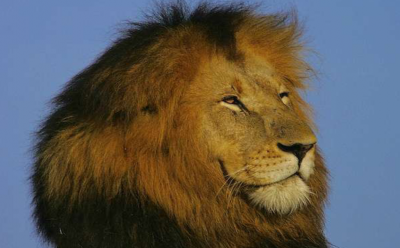News
Latest Lion Aid News
Ethiopian lions – unique, genetically distinct and highly endangered.
Monday 23rd October 2017
|
Currently it is accepted that there are three genetically distinct groups of lions in the world – Indian lions, western African lions, and southern and eastern African lions. These genetic distinctions came about because of lion dispersal patterns out of Africa and subsequent differentiation. It is well-established that thousands of years ago, lions roamed across southern Europe, the Middle East, central Asia and indeed large parts of northern Africa. The Indian lions are a small remnant population of that previously extensive range. Lions are extinct in Europe and northern Africa. The western African lions are more closely related to the Indian lions than those in southern and eastern Africa. But some time ago, yet another genetically distinct lion population was “discovered” in Ethiopia, yet nobody paid very much attention. A scientific paper written in 2011 and published in 2013 detailing the genetics of these lions can be accessed here: The samples to demonstrate their distinctiveness came from lions in the Addis Ababa Zoo, not from any wild lion population in Ethiopia. Nevertheless, the ancestors of these lions were collected from the wild in Ethiopia and then bred through successive generations at the zoo without any imports of any other lions. The zoo, unfortunately, did not keep records of the location where the original lions were captured, as these lions originally were kept in a “private” collection of Emperor Haile Selassie. The Ethiopian lions, while genetically distinct, cluster with other lions from western Africa – again demonstrating a strong influence to lion populations that used to inhabit Europe and the Middle East. Ethiopia has many “unique” mammal species indicative of an ancient “northern” faunal migration into the African continent – for example the Ethiopian wolf the golden jackal, and the Walia Ibex – the only wild sheep in eastern Africa. Sadly, there are very few surviving populations of lions in Ethiopia, and those that remain are widely scattered and isolated. The total number of lions is estimated at about 200-300 animals. Recent instability in South Sudan and Somalia threatens what lions remain on Ethiopia’s western and southern borders. Clearly, an urgent programme is needed to assess the numbers of surviving populations of lions in Ethiopia, to stabilize their populations and secure their habitats, and to eventually allow future population increases. It is not too late to save these unique lions – IF we act NOW. LionAid, together with an Ethiopian NGO (Alchemy World Projects) has the opportunity to engage with the Ethiopian Wildlife Conservation Authority and Provincial Authorities to lay the groundwork for a comprehensive lion conservation programme. These will include: 1. Identification and support of an Ethiopian PhD student to eventually assume local supervision and implementation of the project. 2. A full lion count in accessible regions of Ethiopia with reliable and replicable methods. 3. Placement of telemetry collars on selected lions to allow monitoring. 4. Establish continuous monitoring of lion trends, habitat quality, other carnivores and prey base throughout the lion range. 5. Research on lion ecology and relationship with local communities. 6. Create a database on human-lion conflict in the study area. 7. Research illegal trade in lion and lion products. 8. Establishment of a genetic and disease database for Ethiopian lions to identify populations of special concern and conservation priority – including establishment of a central dedicated cryopreservation facility to allow long-term storage of a diversity of wildlife samples. You can now help us save the unique endangered Ethiopian lion. Click here to access the Indiegogo campaign page and the special "thank you's" we offer for your support! Contact us on info@lionaid.org for further information. |
Add a comment | Posted by Chris Macsween at 10:33




